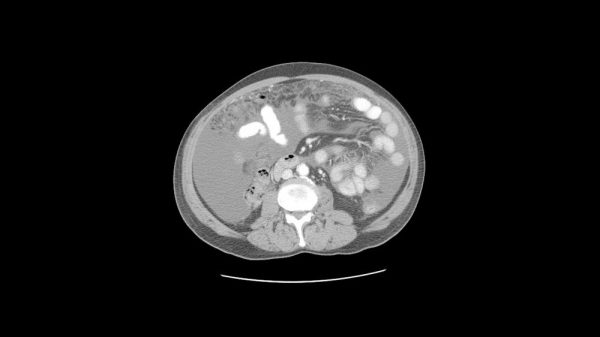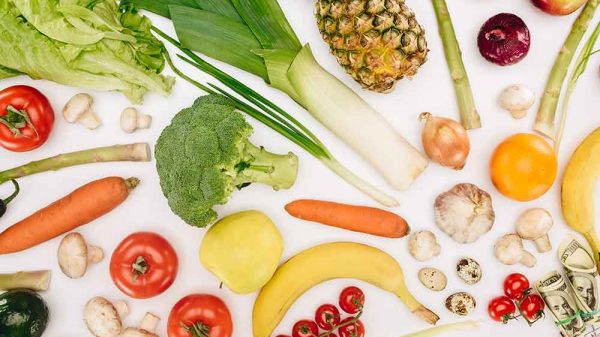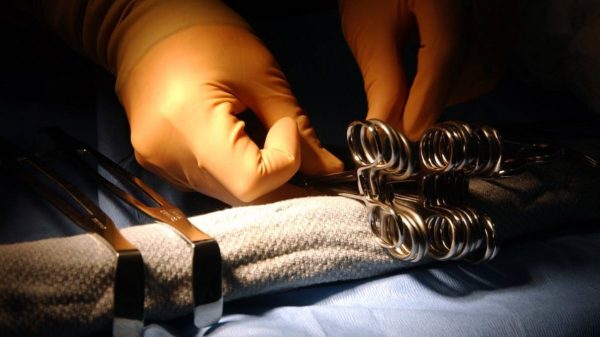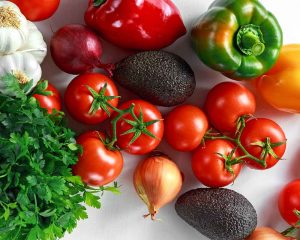Moderate fluctuations in blood pressure throughout our daily lives is normal. When we exercise, consume a salty meal, or even get nervous or startled, our blood pressure may rise briefly before returning to normal. However, if our blood pressure is chronically high during all activities, it becomes a pathological condition known as clinical hypertension. Over time and if left untreated, this can increase the risk for heart disease.
Is high blood pressure hereditary? The answer is yes; although this is only half of the story. Your blood pressure is influenced by both your genetic code and your environment. Having the genetic predisposition for high blood pressure is not a life sentence, and you can reverse high blood pressure by altering environmental factors.
What Is High Blood Pressure?
Hypertension has become a public health crisis on a global scale. According to the Centers for Disease Control and Prevention, nearly a third of adults in the United States have high blood pressure. Hypertension is a primary contributor to heart disease – the leading cause of death for American adults. (1)
Your blood pressure is a measure of how forcefully blood is flowing throughout your body and pushing on arterial walls. During check-ups, your physician will usually take a routine blood pressure measurement. Blood pressure readings include two numbers – written like 120/80 millimeters of mercury (mm Hg), for example – with the first number signifying your systolic pressure and the second number signifying diastolic pressure. Systolic pressure measures the force that blood exerts against your arterial walls during your heartbeat. Diastolic pressure measures the force of blood against arterial walls between heartbeats. (2)
As of 2017, the American College of Cardiology and the American Heart Association have shifted blood pressure guidelines in response to the millions of adults living with hypertension. (3)
Currently, normal blood pressure is defined as being below 120/80 mmHg. Elevated blood pressure has a systolic reading that falls between 120 and 129, combined with a diastolic reading below 80. (3)
Stage 1 hypertension is characterized by either a systolic reading falling between 130 and 139 or a diastolic reading between 80 and 89. Stage 2 hypertension has a systolic reading above 140 or a diastolic reading of 90 or above. (3)
A person is in a hypertensive crisis once his or her blood pressure has a systolic pressure above 180 or a diastolic above 120. An individual in a hypertensive crisis requires immediate medical attention. (3)
Potential Complications of High Blood Pressure
If high blood pressure is left untreated over a long period of time, it can raise your chances of developing related conditions. The constant pressure in your blood vessels causes damage, resulting in narrow, stiffened arteries that restrict blood flow. When blood flow is limited, all organs in your body are in jeopardy of receiving inadequate oxygen and nutrients. Hypertension-related artery damage markedly increases your risk of developing cardiovascular disease and experiencing a heart attack or stroke.
Symptoms of High Blood Pressure
Hypertension is often referred to as a “silent killer,” since it usually doesn’t have symptoms until it has reached the level of a medical emergency. Someone may have hypertension for years and not realize it until they experience negative cardiovascular effects.
If symptoms accompany high blood pressure, these may exhibit as:
- Dizziness
- Headache
- Impaired vision
- Nosebleeds
- Difficulty breathing
Is High Blood Pressure Genetic?
A component of high blood pressure is hereditary. If you have family members who have developed high blood pressure and cardiovascular disease, then you may be genetically predisposed to developing the same conditions. Research has identified nearly 300 gene locations on the human genome that exert influence on blood pressure. (4)
Can High Blood Pressure Be Cured, Even If You’ve Inherited Causal Genes?
High blood pressure can absolutely be cured, even if you’ve inherited a predisposition for developing it.
How Genes Work
Even if you carry some of the genes that put you at a higher risk for high blood pressure and cardiovascular disease, this doesn’t mean you’re destined to develop it or that you can’t do anything to change it once you have it. The genes encoded in our DNA create an adaptable blueprint for our characteristics. The expression of some genes – like eye color– are set in stone; even if we alter environmental factors, eye color will always remain the same. Certain diseases and health conditions are defined by our genetic code as well, like sickle cell anemia, hemochromatosis, and polycystic kidney disease.
Environmental Influence: Epigenetics
On the other hand, other characteristics are controlled by numerous genes that interact with our environment. Such malleable characteristics include the likelihood of developing conditions like type II diabetes, insulin resistance, hypertension, and fatty liver disease. Environmental circumstances can actually induce changes in our DNA, which alters the expression of our genes – for better or for worse. This concept is called epigenetics.
Indeed, some factors that may induce epigenetic changes are beyond our control, including exposure to environmental toxins and experiencing trauma. But some environmental components are within our control, like food and exercise. So, even if you have a family history of high blood pressure, the choices you make in your daily life can change your DNA, leading to the prevention and reversal of high blood pressure.
Relationship Between High Blood Pressure and Fatty Liver Disease
Hypertension almost never occurs in isolation. Usually, high blood pressure occurs as part of a complex of conditions: elevated cholesterol, obesity, insulin resistance, diabetes, cardiovascular disease, and fatty liver disease. All of these conditions are interrelated and can be controlled with lifestyle adjustments. Almost always, the actions you can take to improve cholesterol, lose weight, or reverse fatty liver disease will improve associated health conditions as well.
4 Steps You Can Take to Reverse Hypertension
1. Consume a Mostly Plant-Based Diet
Consuming a plant-based diet rich in fruits, vegetables, whole grains, and legumes effectively lowers inflammation, improves vascular function, and increases potassium intake. Focusing on consuming plant-based whole foods ensures that you are mainly eating foods that are dense in all of the nutrients needed to protect your heart and lower your blood pressure.
Lowering Inflammation
A plant-based diet can reduce inflammation. Systemic inflammation means that your immune system is aggravated, leading to the activation of cells that are responsible for immune response, like macrophages, cytokines, T cells, and lymphocytes. Under normal circumstances, these cells are activated to fight off an infection, heal a wound, or repair damaged cells.
However, chronic activation due to inflammation causes cellular damage to multiple organs that help regulate blood pressure, including the kidney and vasculature in blood vessels. Higher levels of inflammation cause the kidney to produce hormones angiotensin and angiotensin II, which constricts blood vessels and inhibits the elimination of salt from the body. Inflammation also contributes to the fibrosis of vascular tissue in the blood vessels – a key cause of stiffening arteries that raises the risk of cardiovascular disease. Furthermore, inflammatory reactions block the activity of nitric oxide, a highly bioactive compound that triggers the endothelium within your blood vessels to dilate, which increases blood flow. This process is called vasodilation. (5)
Food is a significant mediator for inflammation. A diet high in refined sugar, trans fats, saturated fat, processed meats, and dairy products exacerbate inflammation in the body. On the other hand, a plant-based diet consisting mainly of whole foods soothes inflammation, repairs inflammatory damage, and protects against further damage.
Dr. Michael Greger describes how certain foods influence blood pressure in his book How Not to Die. Try incorporating the foods he suggests into your diet as part of an antihypertensive lifestyle. (6)
Beets and Other Foods with Nitrate
Beets have recently gained popularity as a superfood for athletes because of their cardioprotective effects. In a recent study published in Nutrients, researchers from Wales and Australia evaluated the impact of beetroot juice on endothelial function in older adults. Results showed that those consuming beetroot juice had significantly lower systolic blood pressure and diastolic blood pressure, in comparison to those in the placebo group who didn’t consume beetroot juice. (7)
The therapeutic effects of beet consumption lie in the high nitrate content of beets, which can be converted into nitric oxide in the body. Research demonstrates the importance of nitric oxide in regulating blood pressure through the constriction and dilation of blood vessels. Nitric oxide specifically supports the endothelium, a layer of cells that lines all arteries and vasodilation and vasoconstriction. If the endothelium is damaged or inflamed and isn’t functioning normally, blood vessels are less responsive and don’t dilate properly. Nitric oxide helps decrease inflammation and increase function in the endothelium. (8,9)
Eating foods that provide nitrate and contribute to bioactive nitric oxide levels can help support healthy blood pressure levels. In addition to beets, try adding these vegetables to your diet: (6,10)
- Fennel
- Spinach
- Arugula
- Leeks
- Parsley
- Celery
- Cilantro
- Basil
- Lettuce
Note: Keep in mind that the natural sources of nitrate in vegetables have a vastly different effect than those added to preserved meats.
Flaxseeds and Omega-3 Fatty Acids
Researchers at St. Boniface Hospital Research Centre in Manitoba, Canada, found that consuming flaxseeds on a daily basis lowered both systolic and diastolic blood pressure. (11) Flaxseeds are also rich in antioxidants that lower inflammation in the body, like lignans and flavonoids. (12) Flaxseed also has a high amount of the plant form of cardioprotective omega-3 fatty acids, which is alpha-linolenic acid. (13)
Other foods rich in omega-3 fatty acids include:
- Chia seeds
- Walnuts
- Mackerel
- Salmon
Avocado and Other Potassium-Rich Foods
Avocado is one of the many plant sources that contain high levels of dietary potassium. Consuming potassium regulates hormonal responses in your kidneys and helps offset the fluid retention induced by sodium. Simultaneously limiting your sodium intake and increasing potassium intake is an effective way to balance blood volume levels.
In addition to avocado, try adding these other potassium-rich foods to your diet: (14)
- Sweet potatoes
- Banana
- Spinach
- Lentils
- Beet greens
- Soybeans
Hibiscus Tea
Many of us know of hibiscus as a vibrant pink or yellow flower that grows on tropical islands. But did you know that tea brewed from hibiscus can help lower your blood pressure? Studies support that drinking hibiscus tea plays a role in reducing blood systolic and diastolic pressure in diabetic individuals with hypertension. Hibiscus also contains potent antioxidants, like anthocyanins, that exert cardioprotective effects. (15)
Amino Acids and Cardiac Health
Amino acids are the “building blocks” of protein and are critical to nearly all physiological processes. Research shows that amino acid intake may play a direct role in reducing blood pressure. In a study published in The Journal of Nutrition, researchers evaluated the effects of seven amino acids on cardiovascular health. These amino acids included conditionally essential arginine, cysteine, tyrosine, glutamic acid, and glycine, as well as essential amino acids histidine and leucine. (16)
Results revealed that the intake of these amino acids was associated with markers of cardiovascular health. All seven amino acids were linked to lower blood pressure, with particularly strong associations evident for tyrosine and leucine. Interestingly, amino acids derived from plant sources showed more correlations with lower blood pressure than those derived from animal sources. (16)
This may indicate that an adequate intake of amino acids from high-quality protein sources plays a role in cardiac health. Contrary to popular belief, it is possible to consume enough protein and amino acids from plants. The only catch is that it can take more planning and be a bit more difficult. While a piece of meat or serving of dairy provides adequate ratios of essential amino acids, multiple plant sources need to be consumed in order to meet the same requirement. Consuming adequate ratios of essential amino acids can be less straightforward on a plant-based diet, in comparison to an omnivorous diet. If you’re strictly following a plant-based diet, make sure you consume a variety of whole foods, and if necessary, add a high-quality supplement to your regimen.
2. Cut Down on Sodium
Salt and pepper shakers are in every kitchen and restaurant, and salt brings out the flavors in all of the foods we love to eat. We even add salt to sweets! In addition to being tasty, salt also helps preserve packaged foods, which increases their shelf life. High salt intake, unfortunately, directly increases blood pressure. When we consume foods high in salt, the amount of sodium in our blood rises. In a reactionary mechanism, hormones in our kidneys trigger our bodies to retain water, in order to balance the concentration of sodium in our blood. As a result, blood volume rises, exerts increased pressure on our arteries, and raises blood pressure.
The American Heart Association suggests that ideally, adults should limit their sodium intake to a maximum of 1500 milligrams per day. (17)
Aim to avoid foods high in sodium. We get most of our salt from processed foods like packaged snacks, preserved meats, and cheese (link article). Pre-made meals and fast food also tend to be packed with sodium.
3. Exercise Regularly
Exercise plays a critical role in your heart health and directly lowers your baseline blood pressure. A sedentary lifestyle causes your resting heart rate to increase. With every beat, your heart must work hard to pump blood throughout your entire body. This extra force that your heart uses to send blood throughout your body is also applied to your arteries and increases your resting blood pressure.
Aerobic exercise that improves your cardiovascular endurance – like biking, swimming, jogging, and dancing- is particularly beneficial for blood pressure. As your cardiovascular health increases, the strength of your muscles increases as well. Your heart becomes stronger and doesn’t need to work as hard to circulate blood throughout your body, in turn decreasing both your resting heart rate and blood pressure.
4. Lower Your Stress Levels
Constantly being in a state of stress can contribute to chronically elevated blood pressure. Our stress response developed as an evolutionary adaption to direct threats to our survival or wellbeing, leading to what we commonly refer to as the “fight or flight” response. Even if we don’t experience a direct threat, the constant demands in everyday life can cause a synthetic state of fight-or-flight mode. Being in this state of elevated stress triggers your sympathetic nervous system, causing your adrenal glands to release a surge of hormones norepinephrine and epinephrine – better known as adrenaline. The resulting physiological reactions include elevated heart rate, vasoconstriction, and elevated blood pressure.
To combat chronic stress that exacerbates hypertension, try dedicating time each day to an activity that is relaxing for you. Maybe this means going to the gym or taking a walk outside. Yoga is a calming activity that re-centers your focus on body movements and breathing techniques, helping you get your mind off of your responsibilities, deadlines, and list of tasks to complete. When you’re strapped for time, even 10 minutes of meditating each day can quiet your mind and calm your physical stress response. Additionally, keeping your bedtime the same every night and getting adequate sleep allows your body to more effectively cope with everyday stressors that may contribute to high blood pressure.
5. Eliminate Alcohol
Low levels of alcohol consumption may temporarily lower your blood pressure in the moment, due to its diuretic and sedative effects. However, alcohol is a toxin that our bodies must process and excrete. It’s well known that drinking taxes the liver, which is the organ responsible for metabolizing alcohol. Over time, chronic heaving drinking exhausts the liver, leading to scarring and liver cirrhosis, which without intervention can lead to serious complications like hepatic encephalopathy.
The negative health consequences of alcohol are not limited to the liver. Alcohol consumption – even just a few drinks – produces free radicals throughout the body that impact not only the liver but also the digestive system, kidneys, brain, and muscles. Free radicals inhibit normal cellular function that can damage the muscles in your heart and blood vessels. Binge drinking is also very harmful to your cardiovascular system; a racing heart rate during a hangover provides a glimpse into how alcohol impacts your body.
Limiting your alcohol consumption or eliminating it altogether will help decrease systemic inflammation, allowing your cardiovascular system to strengthen and lower your blood pressure.
Things to Keep in Mind
In some cases, lifestyle and diet are enough to successfully lower your blood pressure within a healthy range. In other cases, taking antihypertensive medications in addition to lifestyle changes is necessary. Always consult your physician when changing your diet and lifestyle to ensure that your regimen is tailored to your specific health needs. If your case of hypertension is a result of other diseases, your doctor will guide you on how to best manage your condition with medical interventions.
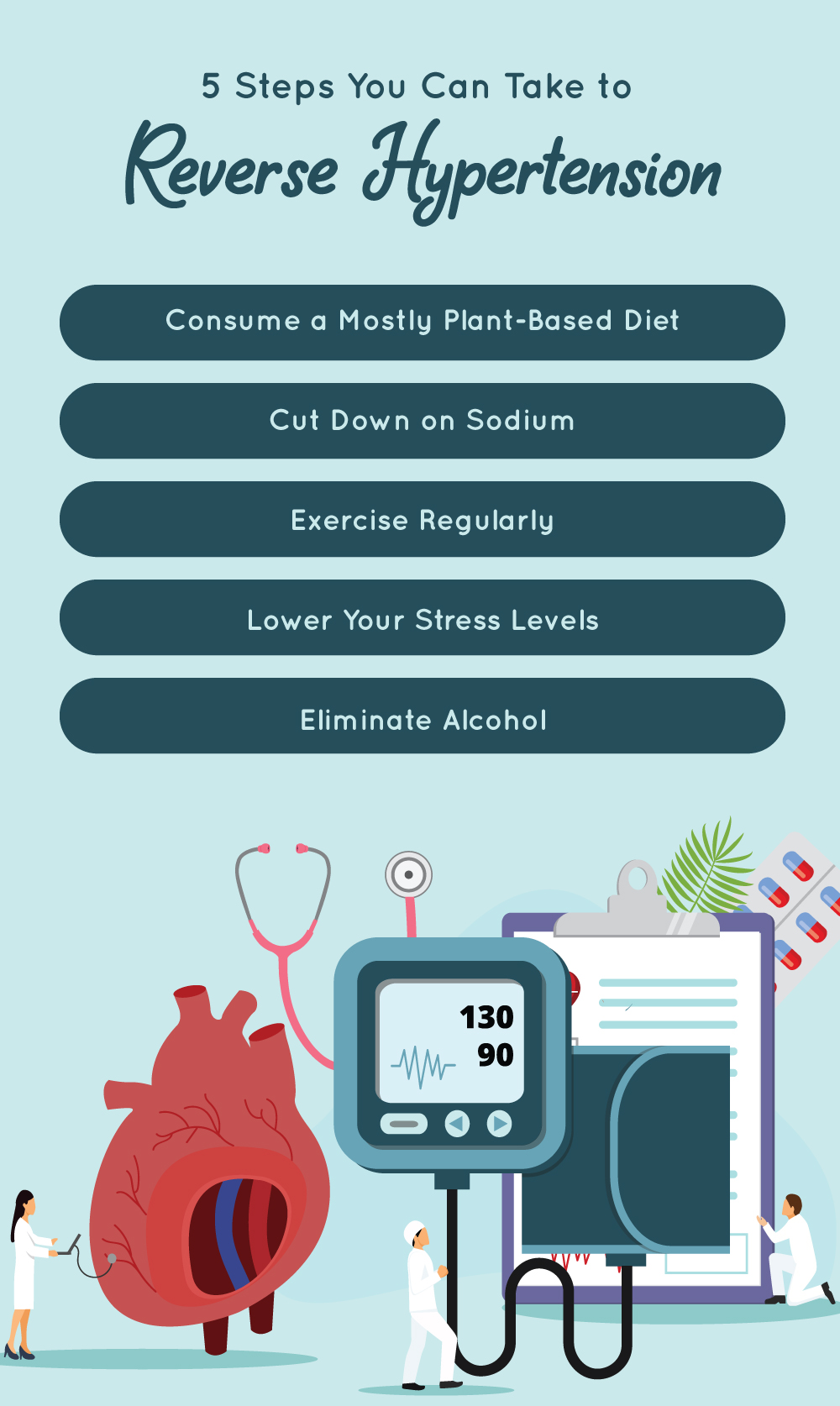
Conclusion
You may have genes that contribute to high blood pressure, but you can strongly influence the expression of these genes. Beneficial lifestyle and diet changes will work in harmony with medications to ultimately produce the most positive health outcome possible.
References:
- https://www.cdc.gov/bloodpressure/faqs.htm
- https://www.ncbi.nlm.nih.gov/pmc/articles/PMC6477925/
- https://www.acc.org/latest-in-cardiology/articles/2017/11/08/11/47/mon-5pm-bp-guideline-aha-2017
- https://academic.oup.com/eurheartj/article/38/29/2309/3852720
- https://www.ncbi.nlm.nih.gov/pmc/articles/PMC6477925/
- How Not to Die by Dr. Michael Greger, M.D.
- https://www.ncbi.nlm.nih.gov/pubmed/31382524
- https://www.ncbi.nlm.nih.gov/pubmed/17170603
- https://onlinelibrary.wiley.com/doi/full/10.1111/jch.12546
- https://academic.oup.com/ajcn/article/90/1/1/4596750
- https://www.ncbi.nlm.nih.gov/pubmed/24126178
- https://www.ncbi.nlm.nih.gov/pmc/articles/PMC4375225/
- https://www.ncbi.nlm.nih.gov/pmc/articles/PMC2989356/
- https://health.gov/dietaryguidelines/2015/guidelines/appendix-10/
- https://www.ncbi.nlm.nih.gov/pmc/articles/PMC3593772/
- https://academic.oup.com/jn/article/145/9/2130/4616089
- https://www.heart.org/en/healthy-living/healthy-eating/eat-smart/sodium/how-much-sodium-should-i-eat-per-day


